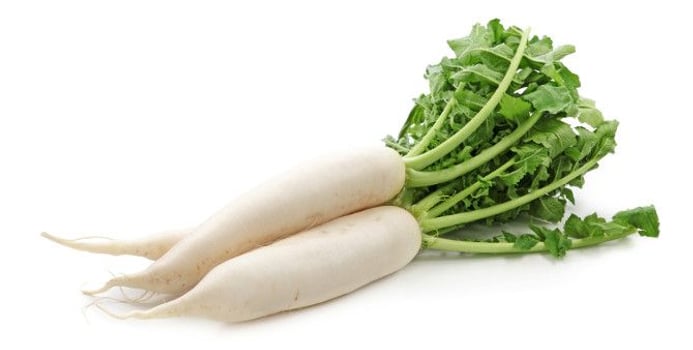Radishes are one of the many vegetables in the mustard family. They occur in various colors - red, rose, purple, lavender and white. The vegetables have a tangy taste that easily flavors any food. They're an excellent low calorie vegetable. A half cup of the raw vegetables contain about 10 calories. They are one of the more water-filled vegetables. About 90 percent consists of water. They also contain good amounts of vitamin A and C.
The vegetable is a rich mineral resource. It contains calcium, phosphorous, potassium and magnesium. Trace amounts of iron, zinc, copper, manganese and selenium are also found in the vegetable. It is also an excellent source of roughage. The vegetable can benefit your health in various ways.
Digestion
The vegetable provides plenty of roughage. This facilitates proper digestion. It helps to eliminate constipation and prevent piles. Radishes are also an excellent detoxifier. The high juice content soothes and cleanses the digestive tract. Various sulfurous chemicals in the vegetable facilitate bile secretion. This improves digestion. It also helps to sustain the health of the liver and gallbladder. The leaf extract facilitates gastrointestinal activities. It also have a laxative effect which enables proper digestion.
Blood Pressure
The vegetable is a rich source of potassium. A 100 gram serving of the root provides about 230 mg of potassium. This vital mineral helps to maintain normal blood pressure. It helps to lower high blood pressure that may be caused by high sodium intake. A stable blood pressure helps to improve cardiovascular health. This lowers the risk of stroke and coronary disease.
Cancer-Protective
Like other vegetables in the cruciferous family, the radish has anti-cancer properties. It contains various phytochemicals that prevent the formation of carcinogens in the body. Sulforaphanes in the vegetable facilitate the production of enzymes that fight carcinogens. This helps to keep cells healthy. Sulforaphanes also hinder the transformation of healthy cells into cancerous cells. Phytochemicals have proved highly effective in the treatment of mouth, intestinal, stomach and colon cancer. The greens are also an excellent source of vitamin C. They have 6 times the amount of vitamin C that the roots contain. Vitamin C improves the body's immunity against various diseases.
Bone and Teeth Health
A 100 gram serving of the raw vegetable provides about 25 mg of calcium. This is a vital mineral for healthy bones and teeth. Inadequate calcium intake can lead to osteoporosis, a disease associated with bone density loss. This increases the risk of fractures. Foods that are rich in calcium can help prevent osteoporosis.
Selection and Storage of Radishes
Crisp, green leaves indicate a fresh and healthy vegetable. Limp leaves are a sign of decreased vitality. Roots should be firmly solid with a clear skin. Soft, spongy radishes with a blemished surface indicate poor health. Such vegetables will not deliver high nutritional content. The vegetable can keep fresh for up to 2 weeks in the refrigerator. Wrap in plastic bags and keep in the refrigerator crisper. Black radishes are even hardier. They can be stored for up to 3 months if kept dry. Place in perforated plastic bags and store in the refrigerator crisper.



